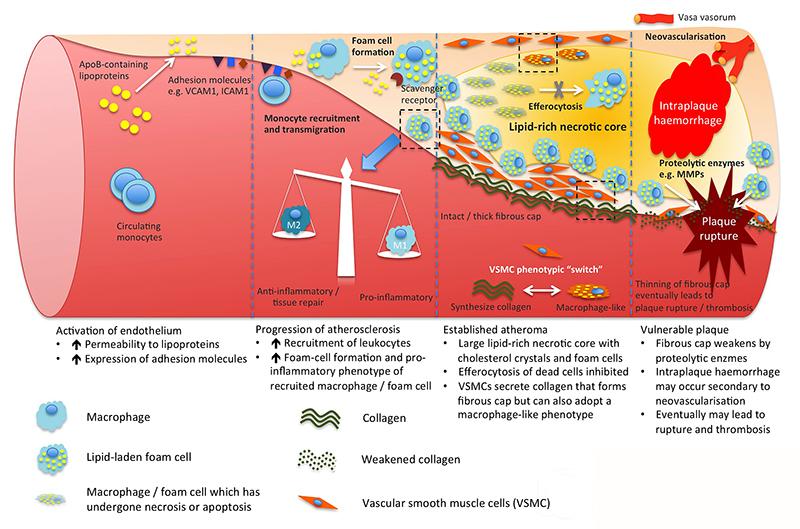Common presenting symptoms:
None – almost always asymptomatic
Overview:
High cholesterol level in the blood is a major risk factor for cardiovascular disease. Cholesterol is transported in the blood by carrier proteins. In the most simplistic view, low-density lipoprotein (LDL) carries cholesterol and delivers it from the liver to the cells around the body; high-density lipoprotein (HDL) however carries cholesterol from around the body destined to the liver for excretion into the gut as bile. Therefore, any interruption in the flux of cholesterol transport will have downstream effect in cholesterol metabolism.
As we have previously discussed in the Coronary Artery Disease section, high LDL cholesterol level is a major risk factor of fatty acid deposits (atherosclerosis) within the arteries, not just in the heart, but in the brain, as well as on the wall of the aorta and other vessels. In turn, the excess cholesterol within the arterial wall provokes an inflammatory reaction and accelerates atherosclerotic artery narrowing – ultimately causing heart attack and stroke.
Recently, there is increased awareness of cardiometabolic risk modification, in which aggressive treatment strategy was deployed to simultaneously alter lipid and glucose metabolism, insulin resistance, central adiposity, as well as hypertension.
How do we investigate?
Our cardiologists will recommend potential investigative tests such as:-
- Blood tests – including full lipid profile and potential genetic testing.
What are the treatment options?
There are certain well-recognised genetic traits of familial hypercholesterolaemia but the majority of patients have a mixed dyslipidaemia that are multi-factorial. Dietary and lifestyle modification plays an important part. But it is rarely sufficient to bring sufficient improvement in patients with high cardiovascular risk, particularly in someone with diabetes or prior heart attacks / stroke. Statin therapy is safe and widely used, although next generations of lipid modification therapy are already on the clinical horizon.
